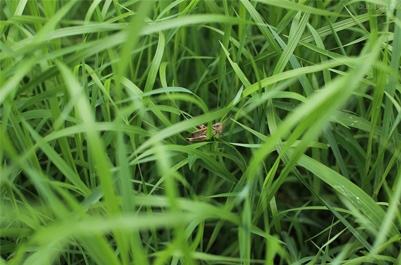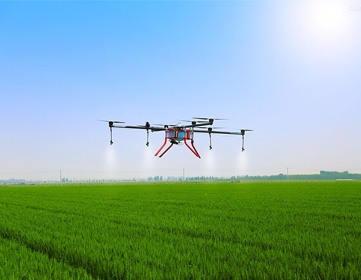Locust

Locust is Acrididae orthoptera. Commonly known as "grasshoppers", a wide range of locusts, there are more than ten thousand species of locusts found worldwide. Tropical and temperate grassland and desert regions throughout the world. Mouth hard, narrow forewings and tough covered on the hind wing on the hind wing is very thin, suitable for flying, legs were developed, leaping.
The harm of locusts
Grasshoppers are well-known agricultural pests, especially in grasses


Principles and methods of locust control:
The number of locusts (Locust) is very large, and their vitality is tenacious, and they can inhabit all kinds of places. In mountainous areas, forests, low-lying areas, semi-arid areas and grasslands, the distribution is the most. Most are important pests of crops. In severe drought, a large number of outbreaks may occur, causing disasters to nature and human beings.
The larva can only jump, the adult can fly, also can jump. Most plants are food.
People often say that the grasshopper (a few places do not distinguish between the size of the grasshopper called locusts) is not a separate species of larvae.
The larva can only jump, the adult can fly, also can jump. Most plants are food.
People often say that the grasshopper (a few places do not distinguish between the size of the grasshopper called locusts) is not a separate species of larvae.
How to determine if there are locusts?
Farmland damage


Operation process
1, protect and make use of local locust's natural enemy. There are many natural enemies of locusts, including frogs, lizards, birds, fungi, viruses, nematodes, predatory beetles, parasitic wasps, parasitic flies, etc.. The ant, a step, a beetle, young bee fly, asilidae are important predators of insect locusts. Therefore, it is important to protect and make good use of local locust natural enemies to control locusts. They can destroy a large part of locusts, can effectively control the outbreak of plague, unless for some reason, the natural enemies of locusts have no ability to control it under the locust outbreak.
2, the use of biological pesticides to prevent and control, the current biological pesticides used to control locusts are locusts, spores of insects, Metarhizium anisopliae and azadirachtin. A grasshopper is a specialized protozoan with only a single cell. Locusts feed on food that has worms that can cause locusts to become infected with tiny worms. Metarhizium anisopliae is a fungal pathogen of grasshoppers. When the locusts touch the fungus, the fungus penetrates the skin of the locust (the body wall) and goes into the locust's body to reproduce or produce toxins, or hyphae that fill the locust's body and kill locusts. Azadirachtin is a substance extracted from a tree called neem, a botanical pesticide.
3, biological control is herding chickens, herding ducks, locust control. Animal husbandry, animal husbandry chicken ducks locust is chicken, duck to eat locusts, to eliminate locusts to. In some areas, chickens or ducks can be raised and released into the field to catch locusts when locusts occur.
2, the use of biological pesticides to prevent and control, the current biological pesticides used to control locusts are locusts, spores of insects, Metarhizium anisopliae and azadirachtin. A grasshopper is a specialized protozoan with only a single cell. Locusts feed on food that has worms that can cause locusts to become infected with tiny worms. Metarhizium anisopliae is a fungal pathogen of grasshoppers. When the locusts touch the fungus, the fungus penetrates the skin of the locust (the body wall) and goes into the locust's body to reproduce or produce toxins, or hyphae that fill the locust's body and kill locusts. Azadirachtin is a substance extracted from a tree called neem, a botanical pesticide.
3, biological control is herding chickens, herding ducks, locust control. Animal husbandry, animal husbandry chicken ducks locust is chicken, duck to eat locusts, to eliminate locusts to. In some areas, chickens or ducks can be raised and released into the field to catch locusts when locusts occur.
advantage
Many methods for the treatment of locusts, mainly including agricultural control (ecological control), biological control, chemical control and physical control, the control goal is to destroy locusts, avoid damage to crops of locusts. Locust to adhere to prevention, according to local conditions, take simple, economical and effective method. Try to kill locusts as soon as possible before locusts occur, or when locusts are less productive and locusts do not cause damage to crops.


